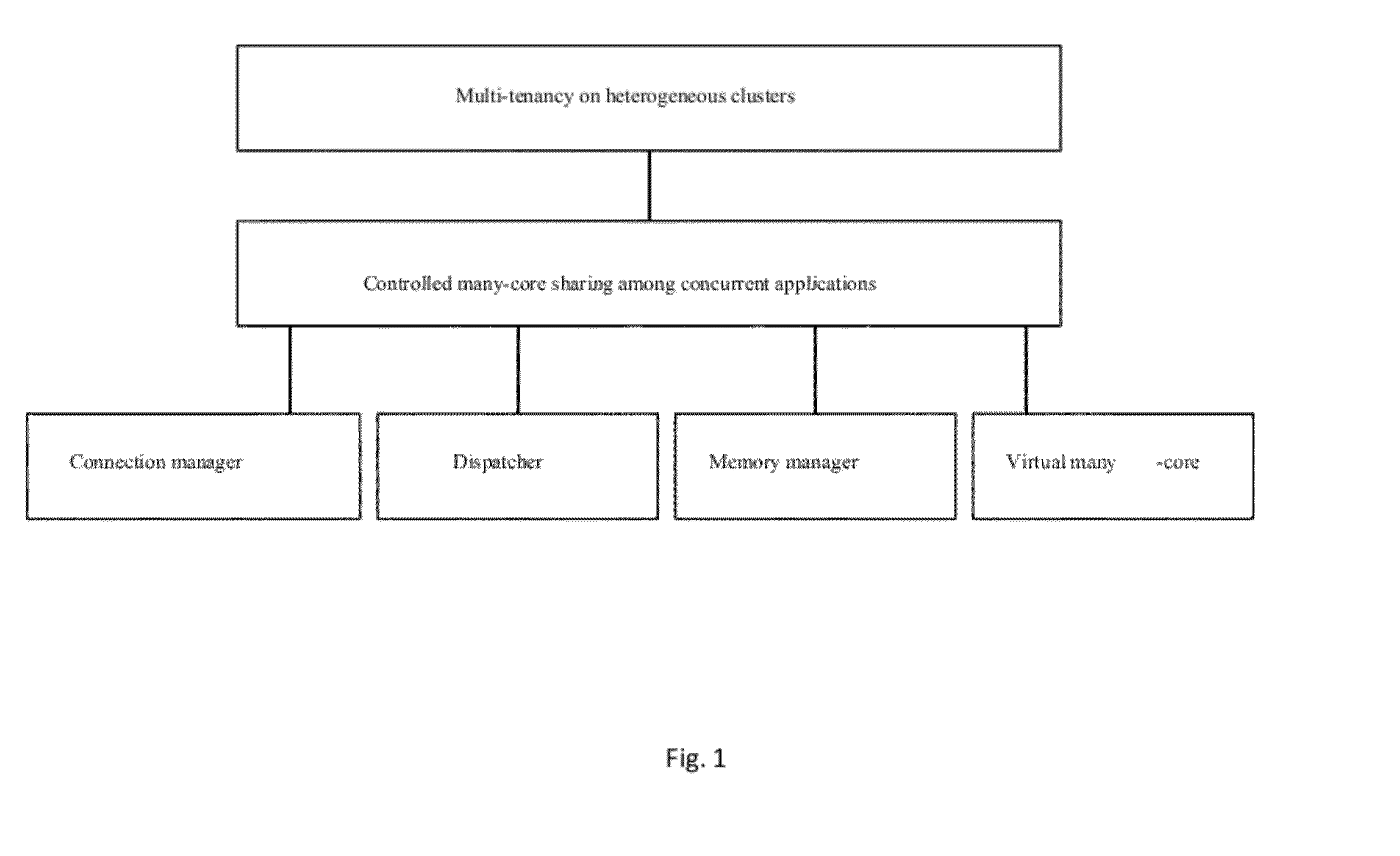Method and System for Memory Aware Runtime to Support Multitenancy in Heterogeneous Clusters
a multi-processing cluster and memory-aware technology, applied in the field of multi-processing systems, can solve the problems of no proposal offering gpu sharing and dynamic binding/unbinding of applications to/from gpus, and no transparency in the application-to-gpu mapping and scheduling process
- Summary
- Abstract
- Description
- Claims
- Application Information
AI Technical Summary
Benefits of technology
Problems solved by technology
Method used
Image
Examples
Embodiment Construction
[0023]The present invention is directed to solving the problem of sharing many-core devices (e.g. GPUs) among concurrent applications running on heterogeneous clusters. In particular, the invention provides transparent mapping of applications to many-core devices (that is, the user does not need to be aware of the many-core devices present in the cluster and of their utilization), time-sharing of many-core devices among applications also in the presence of conflicting memory requirements, and dynamic binding / binding of applications to / from many-core devices (that is, applications do not need to be statically mapped to the same many-core device for their whole life-time).
[0024]The invention offers effective many-core sharing (even in the presence of conflicting memory requirements) that allows better resource utilization and, as a consequence, better performance
[0025]The invention uses a frontend library to intercept all calls directed to many-core devices and redirect them to the sy...
PUM
 Login to View More
Login to View More Abstract
Description
Claims
Application Information
 Login to View More
Login to View More - R&D
- Intellectual Property
- Life Sciences
- Materials
- Tech Scout
- Unparalleled Data Quality
- Higher Quality Content
- 60% Fewer Hallucinations
Browse by: Latest US Patents, China's latest patents, Technical Efficacy Thesaurus, Application Domain, Technology Topic, Popular Technical Reports.
© 2025 PatSnap. All rights reserved.Legal|Privacy policy|Modern Slavery Act Transparency Statement|Sitemap|About US| Contact US: help@patsnap.com



